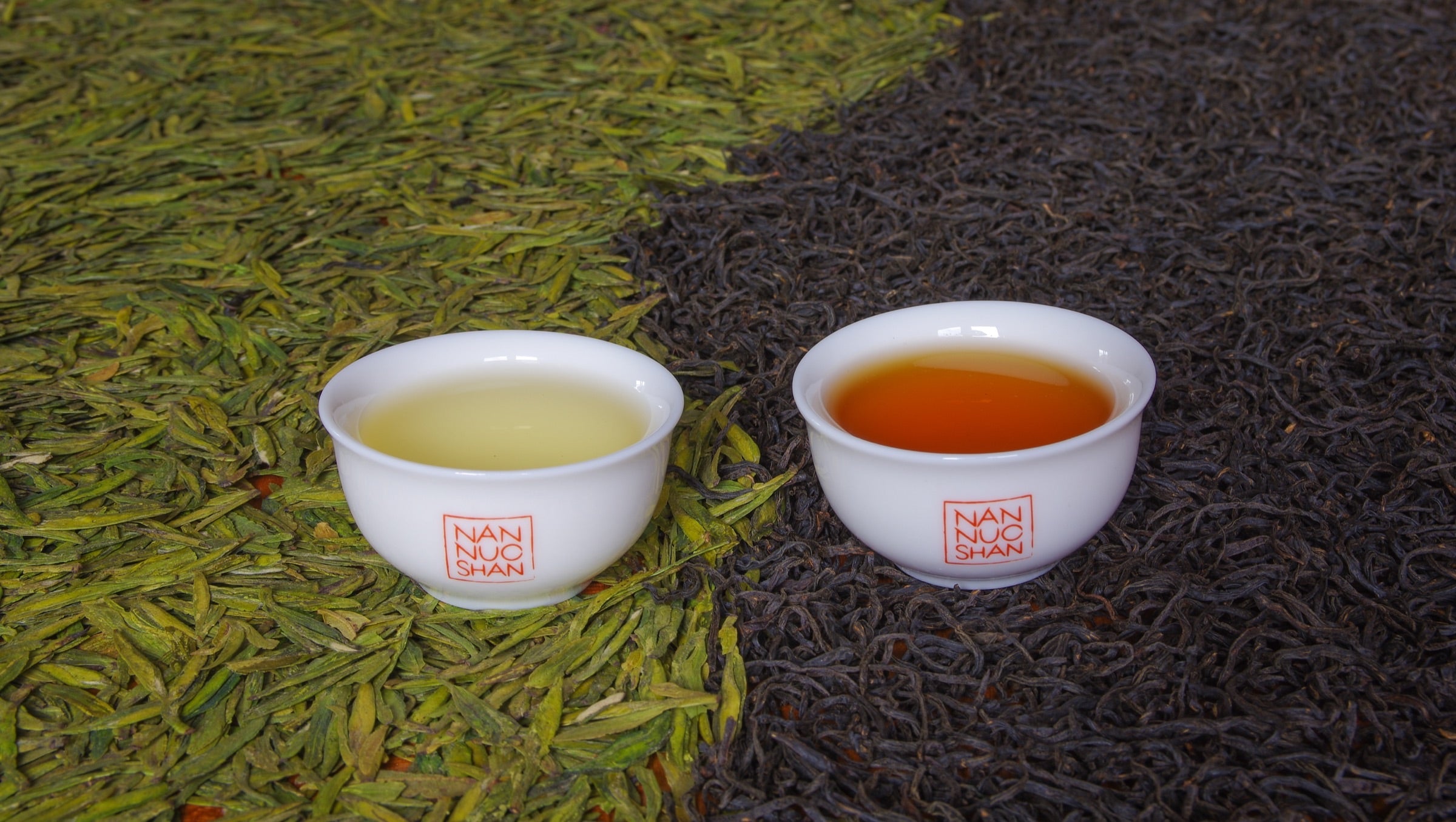Green in China. Black in the West.
When I was a child my mum was serving tea in the afternoon, while I was doing my homework. There was no option; no green or black. There was just tea. Later I came to know it was black tea from India.
In recent years the Western world has discovered green tea and, on a much smaller scale, also other rare varieties like white and oolong. Nonetheless black tea is still by far the most common tea in Europe and America; only one every ten cups of tea is a green tea.
In China the opposite occurs. Most Chinese drink green tea on a daily, sometimes hourly, basis; only one cup every ten is a black tea.

Bai Cha Long Jing on the left; Zhenghe Gongfu on the right.
Why fresh green tea is drunk in the country that discovered it, while the rest of the world prefer the fully oxidized black tea?
In a nutshell the reason is twofold: storage and large-scale production.
Tea was first imported in the West by the Dutch, at the beginning of the 17th century, soon followed by the British. At that time it was transported to Europe overseas; a journey lasting months. Oxidized tea preserves better its taste, while the tender green tea leaves degrade easily over time, especially in a humid and hot environment. So the obvious choice was oolong tea and, after its invention, black tea. European called both black tea, not distinguishing between oolongs and blacks.
Two centuries later the British succeeded in bringing tea seedlings from China to India. Within a few decades they developed an industrial process to produce black tea, thus satisfying the growing demand. Crushing, tearing and curling the leaves into tiny pieces speeded up oxidation and drying. This tea processing method is still nowadays the most common.

CTC tea surrounded by a whole-leaf handmade tea.
CTC tea (crush, tear, curl) is rather course and bitter. Nothing compared to the fine Gongfu Hong Cha, a black tea produced with whole and small leaves by master hands. Gongfu Hong Cha was the first black tea, invented somewhere between northern Fujian and Jiangxi, and is still among the best black teas in the world.
In the last decade tea consumption in Europe and America started turning towards refined tea, produced in environmentally friendly tea farms and fair-traded to the West. Hopefully the trend will not stop.
Written by Gabriele





